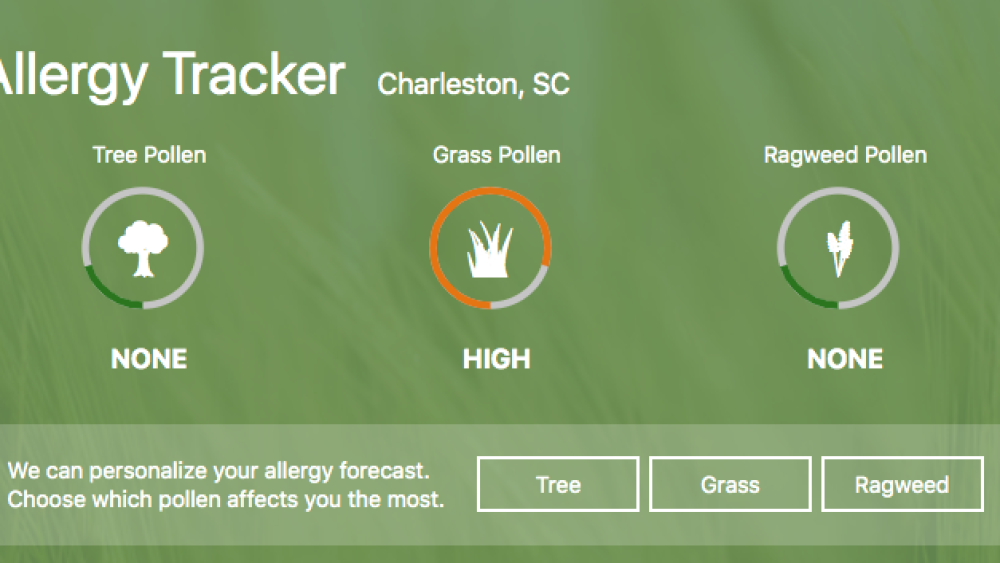Welp, no use denying it. Pollen season is here. Yellow rain, yellow powder-covered cars, and runny noses are here for the foreseeable future (or at least until the season changes).
While there are those who are among the lucky few who do not immediately tear up upon opening their front door, we’re here for those who basically look as though all they’ve been doing is watching Sarah McLachlan SPCA commercials on repeat.
We’ve rummaged through the ragweed and beat around the bushes in order to provide a pollen-proof guide to making it through the season.
Pollen breakdown:
- What is it anyway? It is a fine to coarse powder containing the reproductive cells of seed plants. A.k.a. as pollen swirls through the air, if it lands on a compatible pistil, it germinates.
- Tree pollen peaks in spring, followed by grass pollen in the summer + weed pollen in the fall.
- Rain + warm weather will increase pollination levels.
- According to Pollen.com, the top pollen allergies in the Charleston area are Oak, Hickory, + Sycamore.
- Nationally, Charleston is the 30th most challenging place to live with spring allergies.
- S.C. currently only has two certified pollen-counting stations. The Allergic Disease & Asthma Center in GVL + Charleston Allergy & Asthma.
Reading the count:
Pollen counts indicate the number of pollen grains within a cubic meter of air. The higher the count, the more amount of pollen.
Typically, the counts are represented on a scale of 1 to 12.
- Low: 0-3
- Moderate: 4-6
- High: 7-9
- DEFCON 1: 10-12
Other charts, like the one below from Weather.com, are more straight-forward, providing the level versus the numbered scale.
Most-common symptoms:
- Wheezing
- Sniffling
- Sneezing
- Itchy nose + eyes
- Avoid pollen when you can. The counts are highest between 10 a.m. + 4 p.m. – luckily for you if you’re a 9-to-5’er. The worst days for pollen – those that are warm, breezy, + dry. The best time to be outside: sunrise + sunset.
- Stay fresh and so clean, clean. Be sure to shower after spending time outdoors, as pollen will stick to your hair, lashes, clothes, + skin. When washing clothes, do not hang dry outside.
- Keep covered. Keep your home + car windows closed. When doing yard work, wear gloves + a face mask.
- Run your air conditioner to keep vents circulating,
- If needed, take over-the-counter meds.
- Still sniffling through the season? Get evaluated by your local doctor to figure out what substances are triggering your allergic reactions. By knowing which grain causes flairs, you can more adequately read the pollen counts with an understanding of how it will affect you. Note: if you do by chance receive an allergy shot, these typically take six months to take effect… just in time for fall.
A few resources available to check the levels, as well as which grains are the highest near you on the daily, are Pollen.com + Weather.com.












